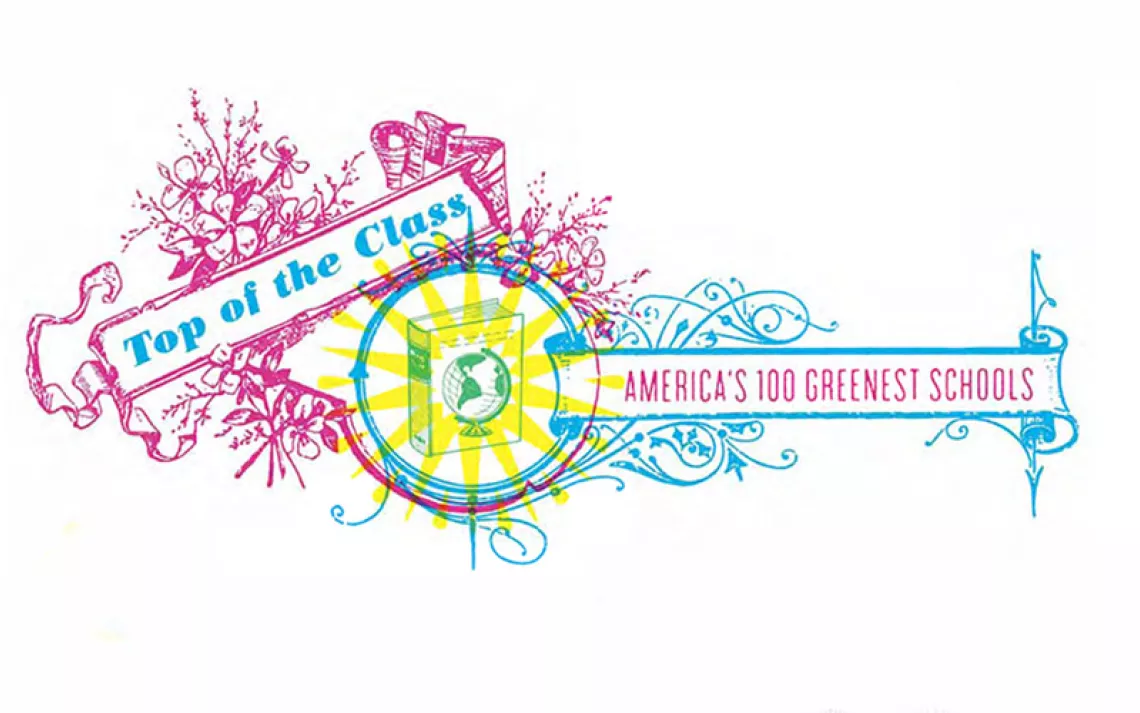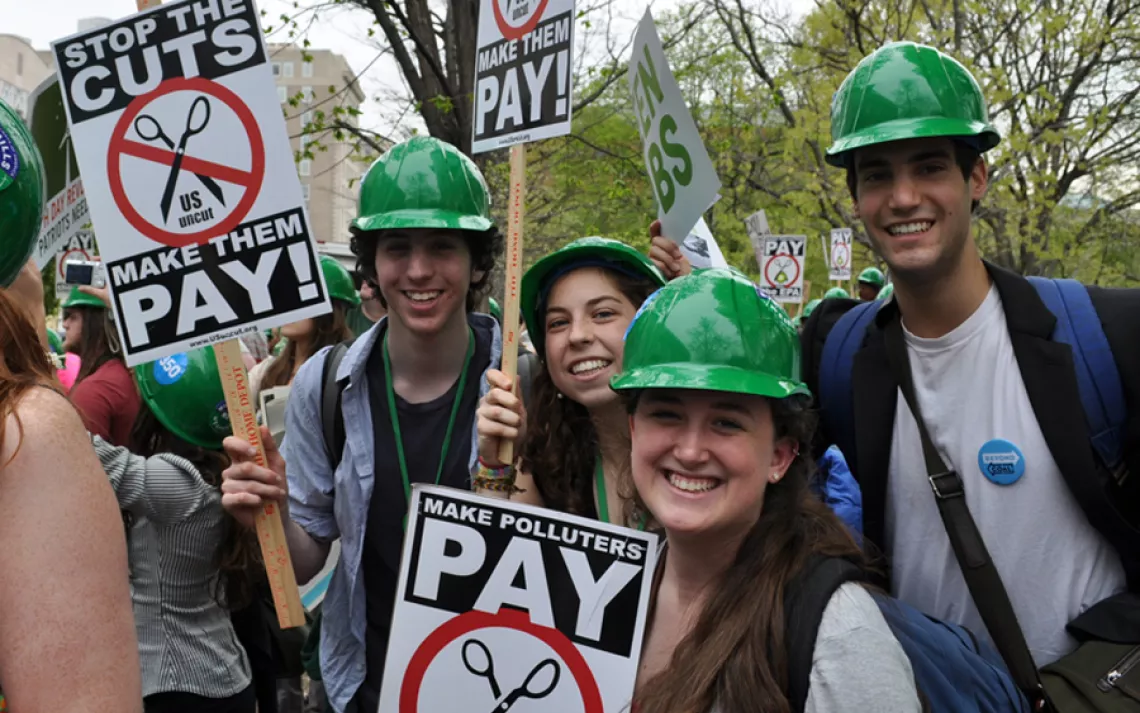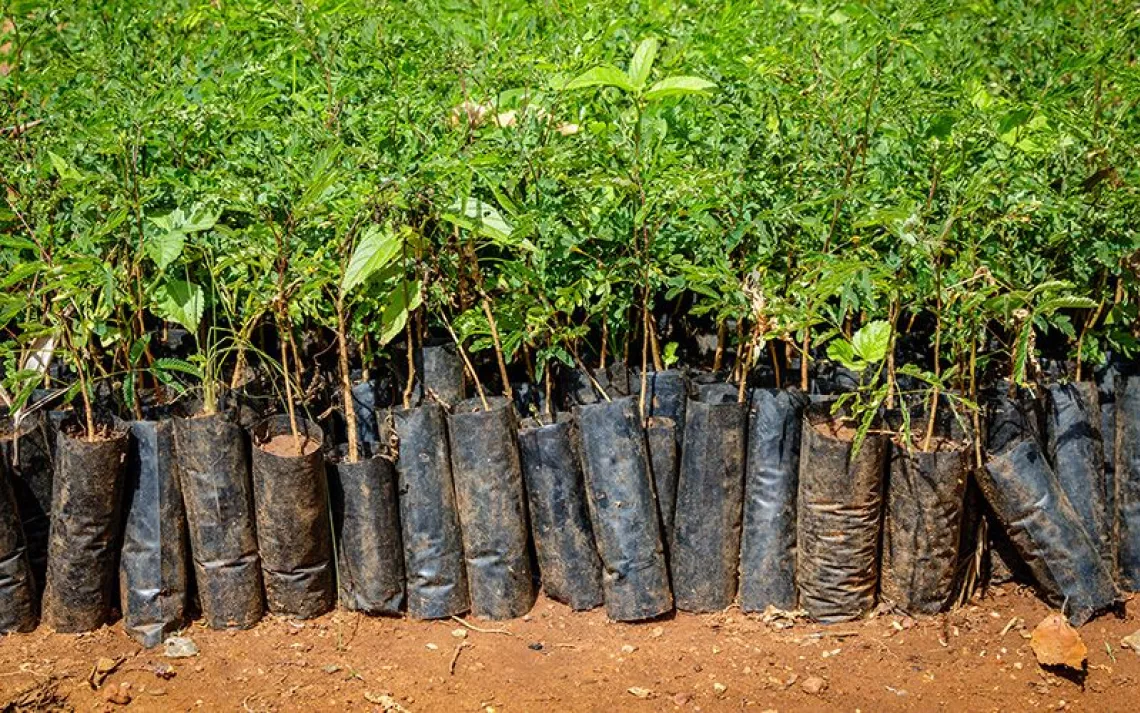Could Green Roofs on Schools Be a Climate Solution?
Inside the Public School Green Rooftop Program Act—and green roofs themselves
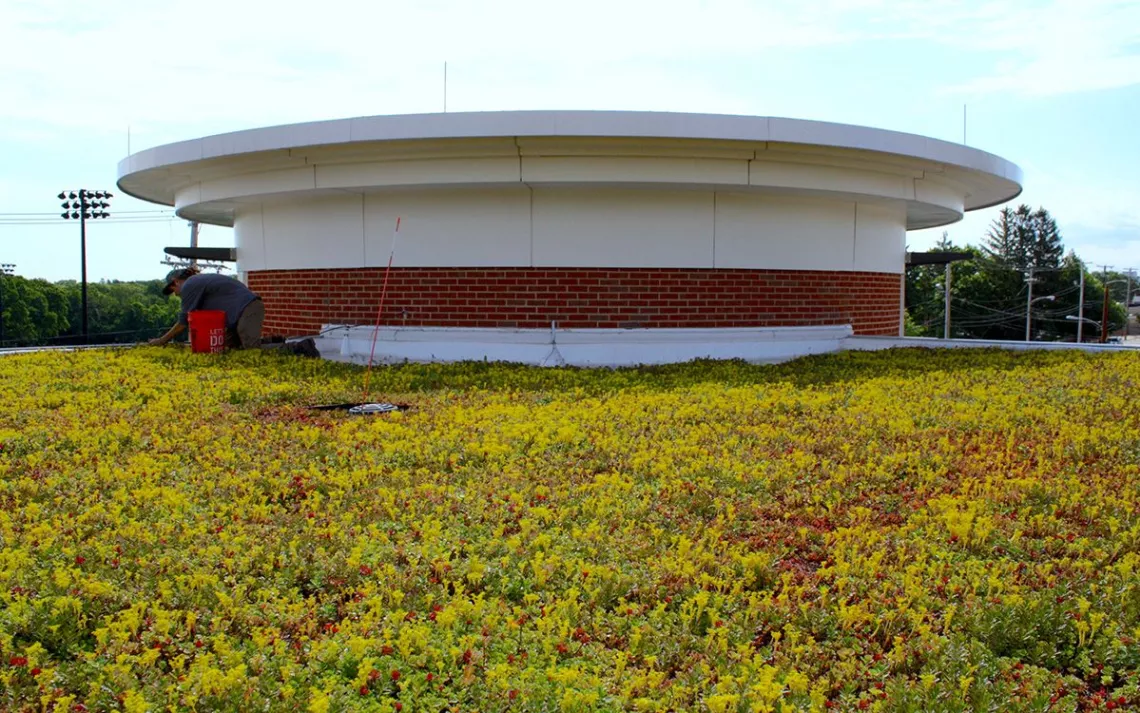
The roof of Quincy Central Middle School in Quincy, Massachusetts.
|Photos courtesy of Recover Green Roofs
More than 7,000 gardens were sprouting in schoolyards across the US as of 2015. For decades, these leafy spaces have been earning praise for their multifaceted benefits: offering kids hands-on experience growing fruits and vegetables, helping them develop a taste for healthy food, and providing teachers with a platform to explore STEM concepts. Representative Nydia Velázquez (D-NY) wants to move some school gardens up in the world—to rooftops—and plant them alongside meadows that also provide havens for wildlife, reduce stormwater runoff, and mitigate urban heat islands.
HR 1863, a.k.a. the Public School Green Rooftop Program Act, which Velázquez introduced in March, would authorize the Department of Energy to provide $500 million in grants to public schools to build and maintain green roof systems. That’s enough for about 14 million square feet of greenery—which, by some estimates, would retain some 154 million gallons of stormwater and 537 tons of carbon—with priority given to schools serving low-income students. Velázquez, backed by 20 (Democratic) co-signers and the support of the National Resources Defense Council and other environmental groups, says such roofs will help forge a path to “cleaner, healthier communit[ies],” according to a press release.
The science is on her side—although Pete Ellis, senior project manager for Recover Green Roofs, a Massachusetts-based company that’s installed green roofs on about 20 school and university buildings and is an industry sponsor of the bill, says that more work needs to be done to quantify things like carbon sequestration potential, biodiversity improvement, and just how much green roofs can reduce heating and cooling costs for any given building. Nevertheless, he says, “A lot of things have been rigorously substantiated: improved air quality, reduced ambient temperature to alleviate urban heat island effects, and the ability to capture and retain stormwater runoff.”
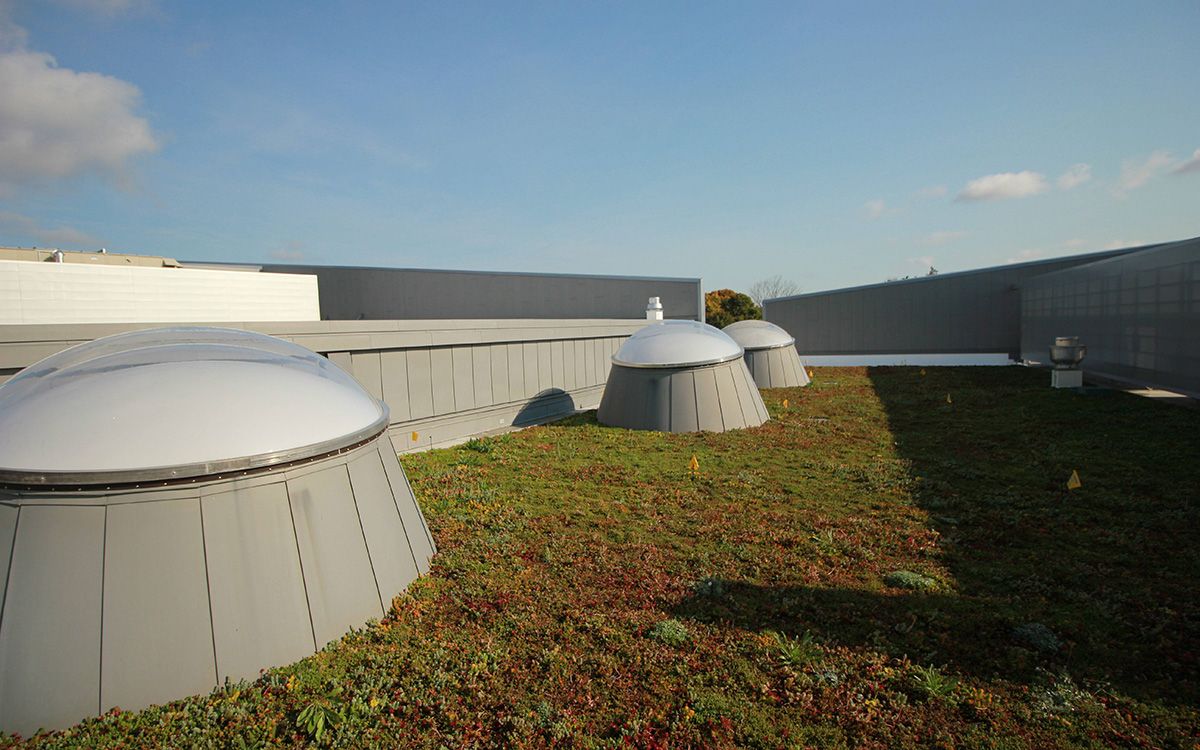
The roof of Saugus Middle–High School in Saugus, Massachusetts.
Ellis says green roofs are also a great way to “maximize the benefit of under-utilized spaces—nothing against [rooftop] solar panels, but if you’re looking for student engagement that checks all the [environmental] boxes, there’s no better way to go about it.” Added bonus: Certain kinds of green roof waterproofing membranes can have an average lifespan of around 40 years—in some instances, this amounts to a marked improvement over the 17 years a typical school’s rooftop membrane lasts before needing to be replaced.
There are numerous kinds of green roof systems, and they implement a variety of strategies in order to grow plants. And techniques differ depending on whether the roof is being added to an existing building or becoming part of a brand-new one, and how much of a structural load a building can hold. Basically, though, insulation is spread over a roof and topped with a membrane and draining material; a substrate of soil or soil-like material is added to the whole roof or part of it; then, the flora goes in. Species of the shrubby sedum genus are the most common plantings—something Ellis says is, happily, starting to change in the US, thanks to a push to implement more biodiverse native plants in order to better support pollinators and other wildlife. On school rooftops, this low-lying greenery might be joined by a separate farm or garden area, with food plants growing either directly in the substrate or in pots.
In all instances, the membrane absorbs and retains heat; the substrate absorbs rainwater and holds at least some amount of carbon as well as fine particulate matter; evapotranspiration occurs between the substrate and plants to produce a cooling effect. And of course, schoolkids get to grow stuff, conduct experiments, and spend more time outdoors in nature—providing a boost to their emotional well-being as well as to their safety. (These are both critical considerations as COVID’s Delta variant continues to put people in close proximity indoors at risk of infection and schools get set to welcome students back this fall.)
One green roof installed in 2012 by Recover, at Natick High School in Massachusetts, actually bucks the norm: It isn’t meant to be traipsed on by students or anyone else. But in addition to its climate mitigating effects, it also provides another significant benefit, which is that it can be seen from multiple classrooms. “There’s been a ton of research around improvements to health and well-being when nature is visible,” Ellis points out.
A couple hundred miles south, New York City has become home to an estimated 730 green roofs, according to 2018 data from the Nature Conservancy—including perhaps its most famous, the one on top of the Javits Convention Center. This 6.75-acre oasis has acted as a nesting place for geese and gulls and become home to honeybee hives. It is now also absorbing 7 million gallons of rainwater and reducing energy consumption by 26 percent every year.

The roof of Saugus Middle–High School in Saugus, Massachusetts.
There’s no official tally of how many green roofs in NYC have been added to new or existing public school buildings—although they’re out there, and they’re proliferating, from Coney Island up to Roosevelt Island and beyond. Vicki Sando, a green roof consultant, says that the Department of Education has lately been pushing for rooftop solar instead. “But solar works better on green roofs—the transpiration cools the panels down and makes them more efficient,” a perk that will only become more necessary as temperatures continue to rise, she says.
Sando also was once a STEM teacher at P.S. 41 in the West Village, and she still volunteers to manage the 15,000-square-foot green roof that was completed on the school in 2012. Named the Green Roof Environmental Literacy Laboratory (GELL), it features (mostly) inedible plants and is meant to help students better understand their role in protecting and enhancing wildlife and ecosystems.
Data collected in 2019 shows that P.S. 41’s roof has contributed to a 32.7 percent decrease in greenhouse gas emissions and a 27.8 percent reduction in energy use over 2008; that it holds over 180,000 gallons of stormwater annually; and that it’s being visited by red-tailed hawks, kestrels, warblers, monarch butterflies, bats, and many other native and migratory animals. The school’s verdure has also become part of a wildlife corridor, linking up other nearby green spaces like Washington Square Park, Union Square Park, and the High Line. Perhaps best of all, a survey of the students themselves found that they voiced a wide range of positive sentiments for their green roof—reveling in “free time with friends surrounded by plants,” “eating the chives,” “walk[ing] around pretending I’m in a fairy garden,” and “check[ing] out some bugs.”
Sando hopes that a current wave of enthusiasm for green roofs will extend beyond school tops and onto many more and varied types of buildings around the city and the country. That’s one of the greatest benefits of Velázquez’s bill: “Regardless of whether or not it passes, it’s providing general awareness to the general public and elected officials and helping our cause, to improve communities and mitigate against climate change,” Sando says.
 The Magazine of The Sierra Club
The Magazine of The Sierra Club
